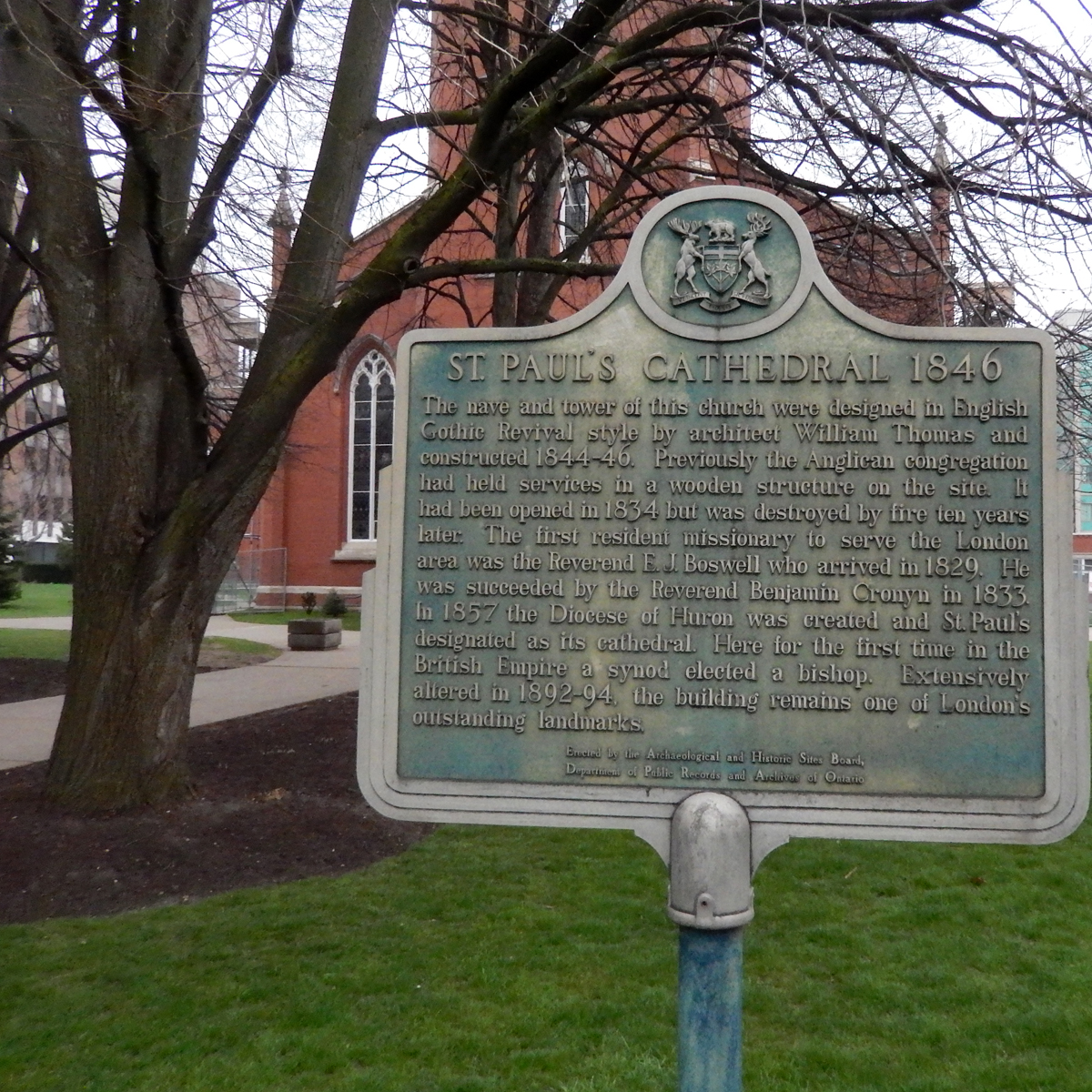 St. Paul’s is London’s Cathedral... Your Cathedral.
St. Paul’s is London’s Cathedral... Your Cathedral.
St. Paul’s is a keeper of community heritage, and also of the rites and traditions practised by generations of Londoners. Alongside the Cathedral is the original site of the graveyard that was eventually moved to Woodland Cemetery (still owned and operated by St. Paul’s). Many people who helped build London are memorialized within the Cathedral, on its grounds and at Woodland, and numerous descendents of these founding citizens still live in our municipality.
The Cathedral has had ties to the broader history of London since the early 1800’s, including*:
- The 160 settlers sponsored by Retired Colonel Talbot, who arrived in London in 1818 accompanied by the Colonel’s son Richard Talbot, “feature prominently in the records of the Anglican Church in the London area.”
- The cornerstone of St. Paul’s was laid “with Masonic honours” when the Cathedral was rebuilt after the fire of 1844. The marshal of the day’s festivities was William Niles, one of the founders of Freemasonry in London.
- The first school for African-Canadian children in London was established by St. Paul’s Cathedral in 1859, and classes took place in the church’s Sunday school rooms.
- Bishop Isaac Hellmuth was the first Dean of the Cathedral and founded Huron College and Western University in 1863.
- John Labatt of the Labatt Brewing Company was a Warden at St. Paul’s between 1878 and 1883.
- Matthews Hall Independent School was founded at St. Paul’s Cathedral in 1918.
- The funeral of Sir Adam Beck, former Mayor of London and MPP, and the first Chairman of The Hydro-Electric Power Commission of Ontario, took place at St. Paul’s in 1925†.
- Fred Kingsmill, of Kingsmill’s Department Store, rang the bells at St. Paul’s for more than 60 years.
The Ontario Archaeological and Historic Sites Board erected a plaque on the Cathedral’s front lawn in 1969, acknowledging its history.
The Cathedral bells have rung over the city to mark important civic events, both joyful and sorrowful, calling citizens’ attention and gathering them together as a community on both civic and religious occasions. Records of significant tolls are scrawled on the walls within the bell tower. The bells at St. Paul’s have pealed to mourn the deaths of British Royalty, to celebrate the end of both World Wars and other conflicts, and, more recently, to mourn and call for justice for missing and murdered Indigenous women and girls.
Heritage places such as St. Paul’s are a source of knowledge and memory. They teach us a great deal about our past, and this endows the community with experience, grace and inspiration to inform future paths. Conserving the Cathedral will enable its community to continue to be activists for social change, and will allow this beautiful place to endure as a venue for arts, music, and cultural activities, all of which work together to enhance civic pride.
*Sources:
Miller, Orlo. Gargoyles and Gentlemen: A History of St. Paul's Cathedral, London, Ontario, 1834-1964. Toronto: The Ryerson Press, 1966.
Except †: http://www.biographi.ca/en/bio/beck_adam_15E.html
